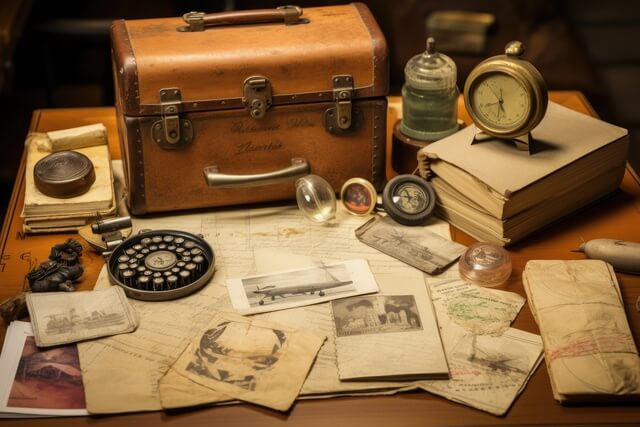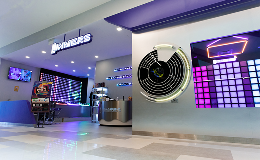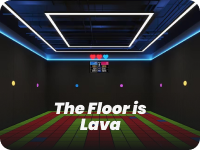
Creating an escape room is an art form—a mix of thrilling narratives, intricate puzzles, and engaging environments that transport players to another world. If you’ve ever wondered what it takes to create a captivating escape room experience, you’re not alone. To help you get started, we’ve gathered insights from the pros at INMERS, Singapore’s leader in horror escape rooms, renowned for immersive 5D effects, lifelike NPCs, and puzzles that keep players on their toes. Follow these steps to design your escape room and learn what makes these experiences unforgettable.
1. Start with a Compelling Storyline
Every memorable escape room begins with a story. This narrative is the backbone of the entire experience, drawing players into the world you’ve created. When developing your storyline:
- Identify a theme: Horror, mystery, fantasy, or sci-fi themes work well as they provide players with a clear, engaging setting.
- Create a hook: What motivates the players to escape? Perhaps they’re investigating a haunted mansion, surviving a post-apocalyptic event, or solving a cold case. The goal is to create an experience where the storyline captivates from start to finish.
- Develop characters: Consider adding NPCs (non-player characters) for interaction. INMERS uses realistic NPCs to add depth to their horror escape rooms, enhancing the narrative and keeping players engaged.
Your storyline doesn’t have to be overly complex, but it should be unique and set the stage for all puzzles and clues to come.
2. Design Interactive and Thematic Puzzles
The heart of any escape room is its puzzles. These puzzles challenge players and give them a sense of accomplishment when solved. Here’s how to create puzzles that intrigue and entertain:
- Vary puzzle types: Incorporate styles, such as riddles, physical locks, ciphers, hidden objects, or logic-based challenges. Mixing puzzle types keeps the experience fresh and engaging.
- Align puzzles with the storyline: Make sure every puzzle has a reason to exist within the world you’ve built. For example, a puzzle involving hidden ghostly messages might fit perfectly in a haunted theme.
- Consider difficulty levels: Some people have different experiences with escape rooms. Offering a range of difficulty levels can make your room accessible to beginners and veterans alike.
If you need inspiration, INMERS is known for intricate, story-driven puzzles that elevate each player’s experience. These puzzles prove that well-thought-out puzzles can make or break an escape room.
3. Incorporate Sensory Effects to Create Immersion
A great escape room appeals to more than just sight—it immerses players using sound, sight, touch, and sometimes even smell. These sensory elements add realism to the experience, making it unforgettable. Consider adding these effects:
- Sound: Background music, ambient sounds, and sudden noises can enhance the atmosphere. Like those at INMERS, horror escape rooms use unsettling sounds to heighten suspense.
- Lighting: Dim lighting, strobe effects, or coloured lights can transform a space. Red lighting can suggest danger, while flickering lights create mystery or dread.
- Tactile elements: Props like creepy cobwebs, old books, or cold metal surfaces can help players feel truly immersed in their surroundings.
The use of 5D effects, as INMERS incorporates, takes immersion even further. Such effects combine sensory stimuli to create a remarkably real environment, setting the bar high for escape room experiences.
4. Add Surprises to Keep Players on Edge
Surprises elevate an escape room from enjoyable to memorable. These can be anything from unexpected plot twists to sudden scares. Here are some ideas to introduce surprising elements:
- Hidden compartments: Players love discovering secret rooms or compartments. Consider adding one that’s only accessible when players solve a specific puzzle.
- Timed events: Certain events can trigger at specific points, adding urgency and excitement. For instance, you could introduce a ticking sound or a visual countdown as time runs low.
- NPC interactions: If possible, use NPCs to add to the suspense. In horror settings like INMERS, NPCs can heighten fear and add an interactive element that surprises players.
Surprises keep players guessing, adding layers of complexity that make the game all the more satisfying to complete.
5. Plan Your Room Layout and Props Carefully
The layout of your escape room and the props you choose play a vital role in building atmosphere and guiding players. Make your room layout intentional to avoid player frustration:
- Optimise space: Ensure the room feels manageable and full. You want enough room for players to explore without making it overly challenging to move around.
- Strategically place clues: Decide where each clue or puzzle piece should go. Props should be more than just decoration—they should serve the storyline or help players uncover clues.
- Invest in high-quality props: Even small details matter, so invest in realistic props to build authenticity. Weathered books, dusty artifacts, and eerie relics can make all the difference for horror themes.
INMERS’s rooms are known for their detailed set design and high-quality props, which demonstrate the difference these elements can make in an immersive experience.
6. Set a Time Limit to Build Tension
Time limits are a classic escape room feature that adds excitement and pressure. Most escape rooms set a time limit of 45 to 60 minutes, depending on the difficulty level. When setting your time limit:
- Consider your audience: A 60-minute time limit with a more straightforward setup may work well if your escape room is geared towards families or beginners. For thrill-seekers, a 45-minute window with intense puzzles can add extra pressure.
- Balance difficulty with time: Test your puzzles to ensure they can be completed within the time limit. Too little time can frustrate players, while too much time can diminish the sense of urgency.
A well-judged time limit ensures players remain engaged without feeling overly pressured, striking the right balance between tension and enjoyment.
7. Gather Feedback and Iterate
Once your escape room is set up, test it with friends or beta groups to gather feedback. Ask testers about the storyline, puzzle difficulty, sensory effects, and overall experience. Then, make adjustments as needed:
- Adjust puzzle difficulty: Make sure puzzles aren’t too easy or challenging.
- Enhance effects based on feedback: Consider adding these elements if players suggest more lighting or sound cues.
- Refine the flow: Ensure each puzzle transitions smoothly into the next, creating a cohesive experience.
Continually improving your escape room will ensure it remains engaging and enjoyable for every player who steps inside.
Experience an Unforgettable Escape Room with INMERS
Designing an escape room is a rewarding process that combines creativity, storytelling, and puzzle-making to deliver a memorable experience. Whether you’re crafting your own or want to experience a truly professional setup, take inspiration from experts like INMERS. Our mastery in creating horror escape rooms with 5D effects, realistic NPCs, and intricate, story-driven puzzles can provide endless ideas for aspiring creators.
Ready to dive into a world of thrill and immersion? Try one of INMERS’s expertly designed escape rooms in Singapore for an unforgettable experience. Visit INMERS to see first-hand how the pros do it and gather even more inspiration for your escape room design!















